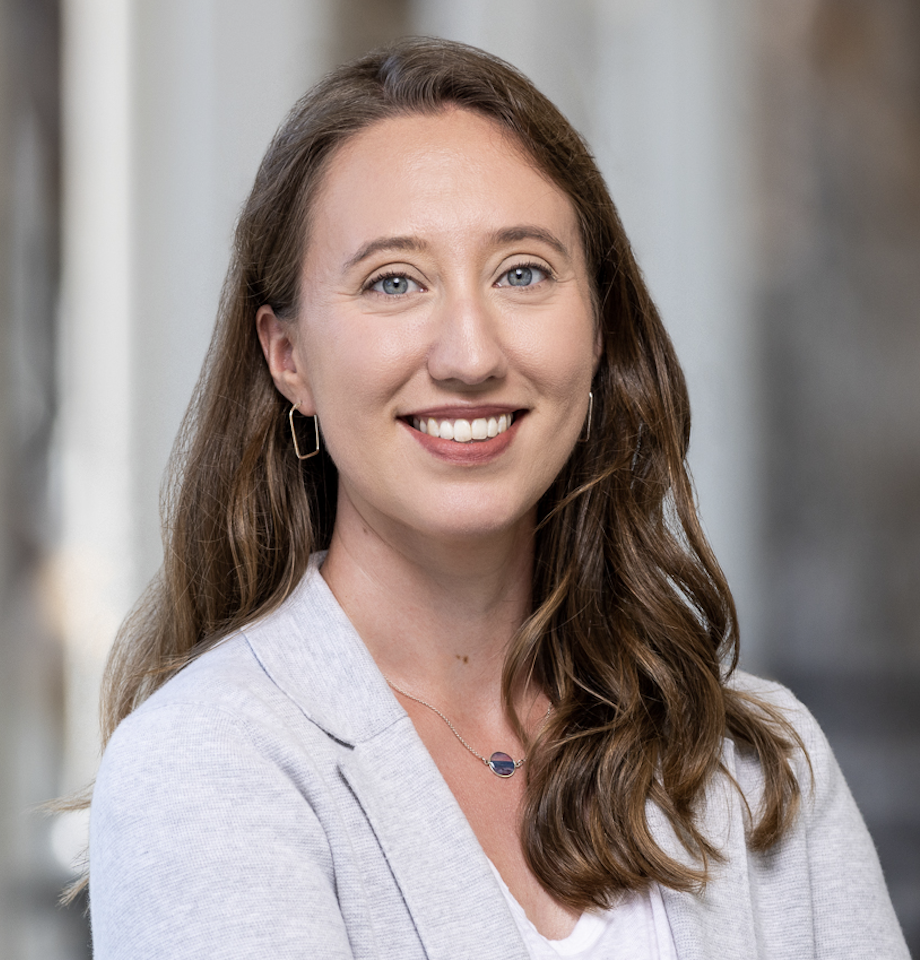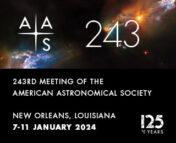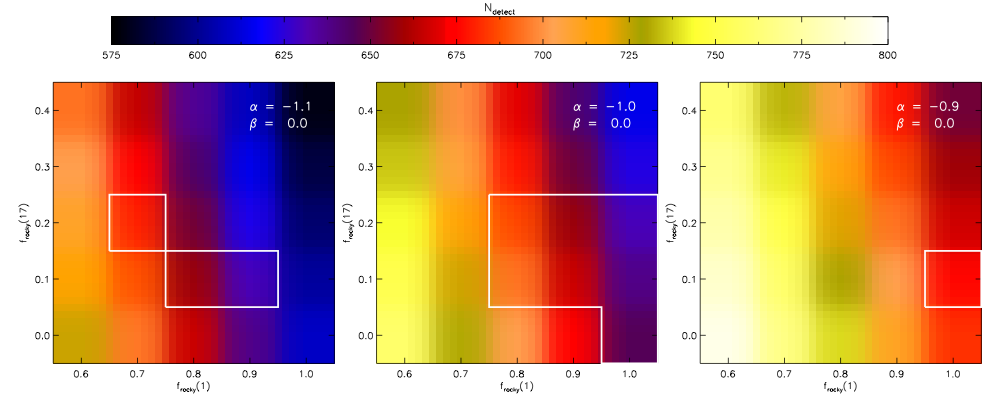In this series of posts, we sit down with a few of the keynote speakers of the 243rd AAS meeting to learn more about them and their research. You can see a full schedule of their talks here, and read our other interviews here!

In the vast expanse of our universe, where over 5000 exoplanets have been discovered, the pursuit of understanding the diversity of planetary systems takes center stage. Dr. Marta Bryan is an observational astronomer whose work delves into gas giants, specifically unraveling the mysteries of their formation and evolution.
Using a diverse set of observational techniques, Dr. Bryan employs data from telescopes to study gas giants at various evolutionary stages. In her own words, she explains, “I’m interested in how planets form and evolve. I’ve been tackling this by studying gas giants.” Her recent work involves the measurement of planetary obliquities in these distant worlds, a task made possible by combining high-resolution spectroscopy, photometry, and astrometry. She articulates, “Up until 2020, when we think about planetary obliquities, our only game in town was our own solar system. This is the angle between a planet’s spin and a planet’s orbit. And you look at our solar system, you see a huge range of orientations. […] You’ve got Uranus famously on its side. […] Venus spins upside down. Saturn is tilted at 27 degrees. How do you tilt a gas giant? It seems pretty challenging. They’re quite massive. And these orientations in the solar system, they’ve told us stories about processes like collisions, accretion of planetesimals, secular spin-orbit resonances. […] We want this enhanced picture for exoplanets, and so that’s something that I’ve been interested in the last couple of years. […] You’re measuring the orbit of the planet, and you can constrain how the planet’s spin is oriented relative to its orbit. And so you can connect that to various formation histories.”
Two Annie Jump Cannon Awardees study planets together!
The narrative takes an exciting turn as Dr. Bryan also collaborates with Dr. Eve Lee, who was also awarded the Annie Jump Cannon Award in 2022, and is also a AAS 243 keynote speaker! Together they explore the connection between outer gas giants and inner planets. Drawing parallels to our own solar system’s history, where Jupiter and Saturn played pivotal roles, their research investigates how these planets influence the formation and evolution of smaller, potentially habitable planets. In a surprising twist, their findings challenge conventional wisdom, revealing an excess of Jupiter analogs in systems hosting inner super-Earths, offering new perspectives on the intricate dynamics of planetary systems: “Our earth doesn’t exist in a vacuum. We have Jupiter and Saturn right there. And so this habitability story, it’s more than just finding an Earth-sized planet in the habitable zone. It’s understanding what properties of the system are important for habitability. […] I think this connection between outer gas giants and inner planets is pretty interesting.” Dr. Bryan also emphasizes that collaborating with theorists, like Dr. Lee, is crucial for grounding observations in physical interpretation and ensuring that theories align with observational context. Dr. Bryan is also excited about the next generation of 30-meter class telescopes on the ground. Currently, many of our detailed characterization methods are limited to gas giants with our current set of telescopes. Dr. Bryan anticipates that the 30-meter telescopes will allow us to push these observations to ice giants and rocky worlds. “I am waiting with bated breath,” she remarked.
“Your work isn’t going to be okay if you’re not okay”
Dr. Bryan’s career path is a testament to her unwavering passion and curiosity for astronomy. From an early interest in dark matter and dark energy, she embarked on a dynamic journey through various research experiences during her undergraduate years. The pivotal moment came in her freshman astronomy class: “We were told that we would get an automatic A if we used the campus telescope to detect a transit. […] This was in Boston, the weather was terrible, but groups of us were just at the telescope every single night, trying to find a transit because we were highly motivated at that point,” she recounts.
Undeterred by the ups and downs of undergrad life, Dr. Bryan discovered her true calling in exoplanet research and decided to pursue it further in graduate school at Caltech. Reflecting on her advisor, Dr. Heather Knutson, she acknowledges, “Grad school, I think, is not easy for a lot of people, but she was such an amazing advisor. I’m extremely grateful to have worked with her.”
Throughout her journey, though, she consistently asked herself, “Is it worth it?” Her resounding “yes” underscores her commitment to the love of research and teaching. She recognizes the inherent challenges in academia, stating, “It’s really competitive, it’s very individualistic. And that can create some, I think, unhealthy cultures and environments that’s important to think about and work on.” Navigating through grad school and a postdoc at Berkeley, Dr. Bryan encourages others to continually assess if the academic path aligns with their values. As she puts it, “Sometimes it seems like just staying in academia is sort of the path of least resistance. But I think it was important to ask […] you love what you’re doing, but is it worth some of the compromises? […] You can love this work and not have it be the right choice for you and that’s okay.” In her current role as a professor in Toronto, she acknowledges the chaotic nature of her responsibilities but finds joy and satisfaction in the choices she has made. However, she recognizes that the academic path may not be suitable for everyone and encourages individuals to prioritize their well-being and happiness: “Your work isn’t going to be okay if you’re not okay. […] So I think prioritizing and thinking about what you need to be okay and mental health resources. I think a lot of grad programs are now really good about funding that, and I definitely took advantage of that in grad school and postdoc and faculty. I think it’s just so important to prioritize. […] Personal well-being should never be the second priority. You come first, your well-being comes first. And work will come from that.”
In a candid conversation about mental health strategies for early career researchers, Dr. Bryan shared valuable insights and personal experiences, emphasizing the importance of work-life balance, maintaining connections with peers, and prioritizing well-being. For Dr. Bryan, a crucial aspect of navigating the often isolating academic space is having friends within the field who understand the unique stressors. She highlights the individualistic nature of academia and the potential struggle to separate self-worth from performance. Having friends provide frequent reality checks becomes a cornerstone for maintaining sanity, as they reassure one another of their competence and value.
Dr. Bryan’s wise words serve as a reminder for early career researchers to listen to their bodies, nurture meaningful connections, and recognize that their well-being is not a secondary consideration but a fundamental prerequisite for success.
To hear more about planets, be sure to attend Dr. Bryan’s Plenary Lecture at 11:40 AM CT on Wednesday, January 10 at #AAS243!
Astrobite edited by: Lili Alderson
Featured image credit: American Astronomical Society




